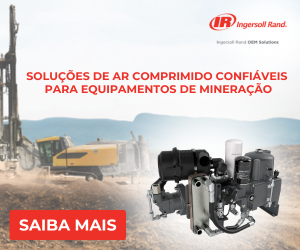The first in workplaces
Model had fewer problems with the crisis than the market in general and is corresponding to manufacturers’ bets in introducing new technologies and features for these machines
Till the middle of 2014, the Federal Government bought 5071 backhoes through electronic auctions to attend the demand of the Programa de Aceleração do Crescimento (PAC – Program of Growth Acceleration). With the end of these acquisitions, this family was one of the most deeply hurt by the negative impact on sales during the last year, showing a retraction of 42.6 percent (6600 units sold, against 11500 units sold in 2013).
In 2015, if the situation did not become much better, at least it stopped to worsen. It is true that the politic and economic crisis maintained the negative performance of this niche in the first half of the year, in a scenario that—according to manufacturers’ projections—will be the same in the next year. In other words, players are waiting for better performance only in 2017.
But even with all these negative factors, the family may close the year with a performance above that of the industry of construction machines as a whole. If the market of the Yellow Line was reduced to half of the last year, backhoe sales dropped approximately 33 to 40 percent, depending on the reference considered. And there are reasons for that. “Backhoes certainly are the most flexible product of the yellow line”, says Celso Santa Catarina, director of Randon Veículos. “It is the first product to come into the workplace and the last to go out, being used in works of small, medium and large size. Many times it is operated by its owner, who uses the machine to support his family. Due to all these reasons, it was one of the machines of the yellow line that less felt the crisis.”
EVOLUTION
However, the economic crisis and the consequent drop of sales did not harm the technologic evolution of the backhoes produced in Brazil. This is what manufacturers say. According to Garcia, from Sotreq, the technologic improvements on these machines follow the same standards of other earthmoving equipment. The industry is making available from data monitoring systems through satellite to working and productivity control tools.
In the case of Caterpillar, he says that all these accessories—such as the VisionLink monitoring system and the work tools (special buckets, pallet forks, hydraulic thumb, etc.)—may come directly from the factory or be installed later by its dealer, Sotreq. “An example is the Accugrade reference system that—through position sensors, inclinometers and monitors—give to the operator the design reference inside the cab, increasing productivity and precision in the movements”, ensures him.
By its time, Case points out the introduction of the S-Type powershift transmission and of the rear attachment control (Pilot Control). According to França, the first feature is more indicated for works with motion and use of the front attachment. And the second is more used in applications that involve more the rear excavating attachment. “In the Brazilian Market, our model 580N is the sole backhoe that brings these two technologies together or separated, depending on the necessity”, points out him. “Since this type of machine is the most versatile of the industry, used not only in construction and infrastructure but also in agriculture and other areas, it is common to find it used in several applications where its rear and front attachments are equally important.”
According to França, the transmission suppressed the conventional lever for speed change. “The selection is made easily turning a button placed in a small lever in the steering column”, explains him. “This new transmission has also a kick-down function, which allows the operator to reduce from second to first speed just pressing a button.”
With the Pilot Control, he ensures that Case became the sole manufacturer to offer three options of backhoe control, added to the options of double command and three levers with pedal-controlled swing. “This new option makes possible to operate the machine with the same comfort level of a hydraulic excavator, using joysticks”, says him. “It has continuous adjustment of the towers, support for feet and more space for the legs. In addition, it is possible to change the control standard between backhoe and excavator modes just pressing a button. It is indicated for applications where the rear attachment is more used, such as excavation of irrigation ditches and sanitation works.”
In the case of John Deere, Marques says that the 4-wd models have shafts with open differential and slipping limiter, what allows “higher traction that ensures higher productivity in a wide range of applications”. Another important feature of the 310K—according to him—is the standard powershift transmission, which allows “speed changes with no power loss and reduces very much operators’ fatigue along the day”.
In addition to these technologies, the model of John Deere may also be adapted with the feature WorkSight, an integrated package of technologic solutions that include information about use and failure codes, pre-diagnosis and remote interaction with the backhoe. “The machine may also be equipped with the JDLink, a monitoring system that informs a wide range of data including troubleshooting, use of the machine and geographic positioning. It may be accessed through site, e-mail, SMS and applications for smartphones and tablets”, says him.
In addition, Marques points out that the JDLink interacts with the Service Advisor Remote tool, a feature that allows the dealer to connect with the machine to carry out remote troubleshooting and analysis of performance data, reducing time and costs associated to equipment repair. “These technologies—some of them exclusive—are fundamental to ensure our clients to reduce their production costs and to produce more and more”, ends him.

Av. Francisco Matarazzo, 404 Cj. 701/703 Água Branca - CEP 05001-000 São Paulo/SP
Telefone (11) 3662-4159
© Sobratema. A reprodução do conteúdo total ou parcial é autorizada, desde que citada a fonte. Política de privacidade















